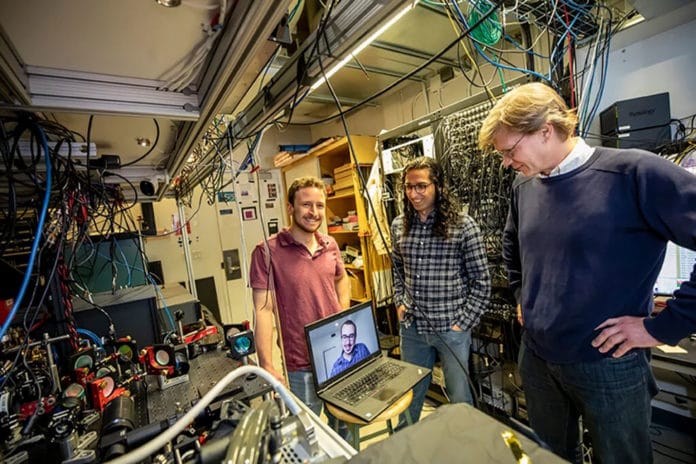Quantum information systems derive their power from controllable interactions that generate quantum entanglement. Buiding scalable quantum information systems require programmable operations between desired qubits within a quantum processor. In most advanced approaches, qubits interact locally, constrained by the connectivity associated with their fixed spatial layout.
In a new study, scientists demonstrated a quantum processor in which qubits are coherently transported in a highly parallel manner across two spatial dimensions. Plus, the processor has dynamic, non-local connectivity.
This new approach for processing quantum information allows scientists to dynamically change the layout of atoms by moving and connecting them amid computation.
The ability to shuffle qubits while maintaining a quantum state during the computation process drastically enhances processing capabilities. It also allows for the self-correction of errors.
Clearing this hurdle marks a significant step toward building large-scale machines that leverage the bizarre characteristics of quantum mechanics and promise to bring about real-world breakthroughs in material science, communication technologies, finance, and many other fields.
Mikhail Lukin, the George Vasmer Leverett Professor of Physics, co-director of the Harvard Quantum Initiative, and one of the study’s senior authors, said, “The reason why building large-scale quantum computers is building hard is because eventually, you have errors. One way to reduce these errors is to make your qubits better and better. Still, another more systematic and ultimately practical way is to do something called quantum error correction. Even if you have some errors, you can correct these errors during your computation process with redundancy.”
For this work, scientists created a backup system for the atoms and their information called a quantum error correction code. They used a new technique to generate these codes, including a toric code.
Dolev Bluvstein, a graduate student in the Physics Department from the Lukin group who led this work, said, “The key idea is we want to take a single qubit of information and spread it as nonlocally as possible across many qubits so that if any single one of these qubits fails, it doesn’t affect the entire state that much.”
Thanks to a newly developed method, this approach becomes possible where any qubit can connect to any other qubit on demand. This happens due to ‘spooky action at a distance.
In this context, two atoms become linked and able to exchange information no matter how far apart they are. This phenomenon makes quantum computers so powerful.
Bluvstein said, “This entanglement can store and process an exponentially large amount of information.”
The key is that the researchers can create and store information in what is known as hyperfine qubits. The quantum state of these more robust qubits lasts significantly longer than regular qubits in their system (several seconds versus microseconds). It gives them the time they need to entangle them with other qubits, even far-away ones, so that they can create complex states of entangled atoms.
Scientists pair qubits first, then pulse a global laser from their system to generate a quantum gate that entangles the pairs and stores the pair’s information in hyperfine qubits. They then entangle these qubits by moving them into new pairs with other atoms in the system using a two-dimensional array of individually focused laser beams known as optical tweezers. They repeat the processes in whichever order they desire to make different types of quantum circuits that can run different algorithms. The atoms eventually become connected in a cluster state, where they are spaced apart sufficiently to act as backups for each other in the event of a mistake.
Using this architecture, scientists could generate a programmable, error-correcting quantum computer operating at 24 qubits. The system has become the basis for their vision of a quantum processor.
Lukin said, “In the very near term, we basically can start using this new method as a kind of sandbox where we will start developing practical methods for error correction and exploring quantum algorithms. Right now [in terms of getting to large-scale, useful quantum computers], I would say we have climbed the mountain enough to see where the top is and can now actually see a path from where we are to the highest top.”
The system is built by the research team, which includes collaborators from QuEra Computing, MIT, and the University of Innsbruck.
Journal Reference:
- Bluvstein, D., Levine, H., Semeghini, G. et al. A quantum processor based on coherent transport of entangled atom arrays. Nature 604, 451–456 (2022). DOI: 10.1038/s41586-022-04592-6
